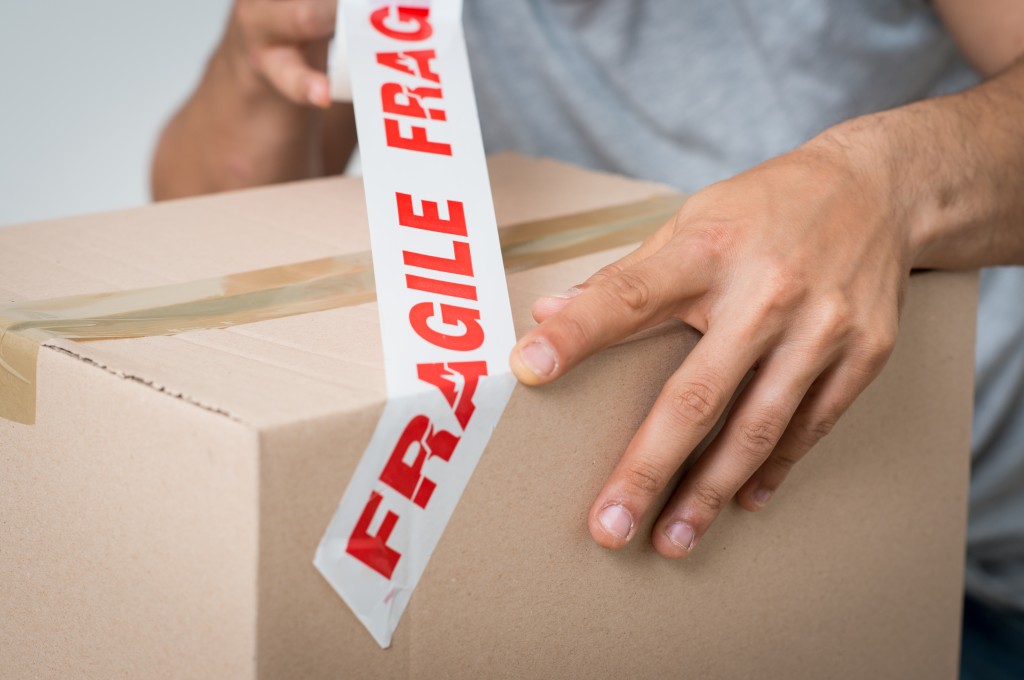All customers expect their packages to arrive on time and undamaged, which is the main reason why packing is one of the most crucial steps in the e-commerce process. It doesn’t matter if your products are awesome and unique or your prices are super cheap–if the order arrives in poor condition because of transit, it will already have a negative impact on the customer experience.
With that in mind, e-commerce businesses must not underestimate the importance of packing. At the same time, businesses must actively avoid making these five common packing mistakes:
1. Using oversized packaging
When choosing packaging for your e-commerce store, picking the right size is imperative. Too small packaging is obviously impossible to use, while too big packaging leads to unnecessary additional expenses. While larger packaging may offer more protection for its contents, it is needlessly more expensive and can be frustrating for customers to handle.
Select packaging materials that are just a bit larger than what you’re shipping. For instance, if the product is 10 by 10 inches in size, a box that is 12 by 12 inches should be big enough to accommodate the product as well as the fillers needed to cushion it.
2. Failure to use fillers
Fillers are used to fill out empty spaces in a box so that the product doesn’t jostle around while in transit, whether it’s being shipped by a local delivery company or the national postal service. If you don’t use fillers, your product can arrive at your customer’s doorstep all banged up because of its unrestricted movement around the box. And of course, you have to ship a replacement item or issue a refund–either way, you’re going to end up with losses.
There are many types of fillers to choose from, such as bubble wrap, packing peanuts, shredded paper, and balled up newspapers, just to name a few. When choosing the type of filler to use for packing, your main goal should be to fill out all the empty spaces with the least amount of weight. Apart from that, you should also minimize the inconvenience on your customer’s part by choosing a filler that doesn’t make much of a mess–or at least is not too difficult to clean.

3. Making packages difficult to open
Packages should be secure, but not impossible to open. Making your packages too difficult to open can make customers extremely annoyed, which can affect their first impression of what they ordered before they even see it. Moreover, you can also risk customers accidentally damaging the product in the process of opening the packaging.
In general, customers should be able to open the package with a pair of scissors at the very least. Hence, you should avoid packing your boxes in multiple layers of tape or using materials that are impossibly hard to open.
The type of packaging should also correspond with the product inside it. If the product is something potentially dangerous, such as knives, power tools, and medication, it should be packed in secure material that is not so easy to open. Similarly, if the product is small and of high value (e.g. smartphones, cameras, earphones, etc.), the packaging should be tamper-proof, secure, but not difficult to open at home.
4. Using wasteful materials
With climate change continuously looming over our heads, more and more consumers are shifting preference to brands that use eco-friendly packaging. They worry about the impact that their choices have on the environment, and so are more inclined to buy from businesses who use packaging materials that can be reused or recycled.
Considering this, avoid using shipping materials that take too long to decompose (i.e. plastic, Styrofoam, foil) and instead opt for more sustainable options such as packaging made from biodegradable materials such as cornstarch or sorghum. Cardboard boxes are also a standard for eco-friendly packaging since this type of material can be recycled or otherwise decompose quickly.
5. Overpacking
Overpacking a package may save you some costs, but it increases the risk of damage in transit. And if you’re shipping multiple products, getting them damaged will ultimately lead to additional costs for you.
Never overpack a package, no matter how hard it may seem to damage the products inside it. They have to have sufficient wiggle room between each other, as well as the walls of the box, to avoid banging against each other en route to your customer.
These are the five most common packing mistakes that all e-commerce merchants must be wary of. Are you making one or more of them? If so, it’s high time to change your ways before your returns and refund requests climb higher.



